Off to the races: Mike Woebkenberg leads the field in harness racing
DOVER – Hot. Dry. Dusty.
A short two-lap burst of speed from a galloping start powered by a young 1-horsepower ball of muscles. Life on the other side of the fairgrounds with horsemen is a little different from the world of 4-H. And without one man – Mike Woebkenberg – who has been riding backward in a customized pickup truck starting the race for 32 years − harness races would not have started at the Tuscarawas County Fair, or many others around the state.
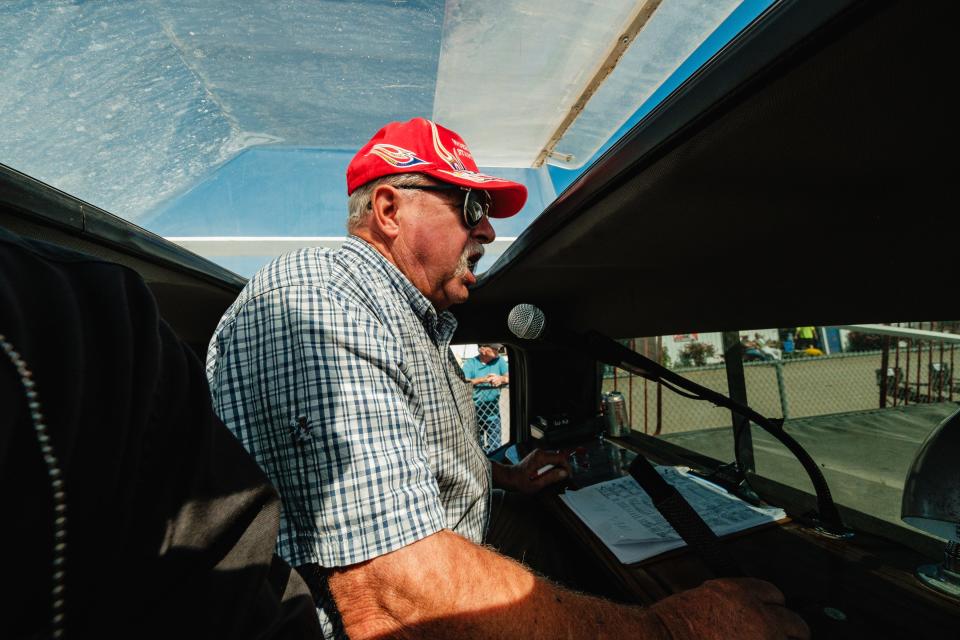
Based in West Alexandria, Ohio, on the Indiana border, Woebkenburg said he has been in the horse industry his entire life. At the age of 6, he started showing pleasure ponies at the Great Cincinnati Horse Show, as well as racing harness ponies in the early 1960s.
As a third generation horse racer, by 1967 he was the youngest standardbred driver in the country when he began showing horses for customers and eventually saved enough money doing so to attend The Ohio State University. There he earned a degree in engineering and minored in economics. The market for horse carts was realized after he took payment from a customer in the form of two horse carts, fixing them up, and eventually selling them.
All that experience led him to start and maintain a business firmly rooted in the specialization of cart racing culture, where he provides a wide array of services from fabrication of all kids of carts, refurbishing and restoration, to the design, engineering and creation of mobile racing starting gates.
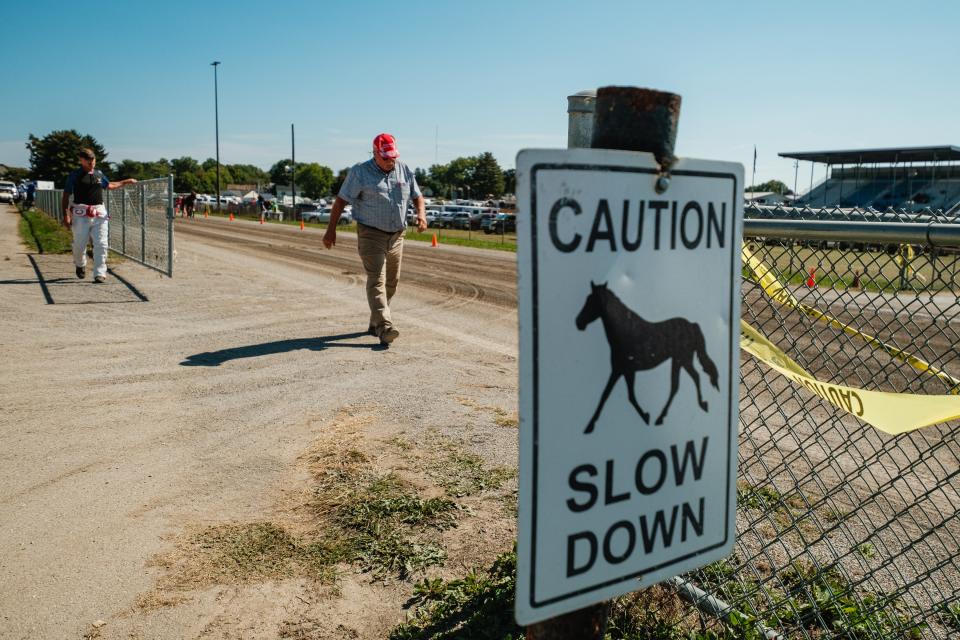
That top to bottom commitment not only shows in his command over race operations, but in the articulation of selling racing as a product through the lens of fair culture, racing in fair history, and the politics of the sport.
“Right now, 40 percent of the gates in North America and Canada are mine. We do about 3,800 races per year,” he said. “I believe in the fairs. My fairs are such a great minor league, in essence. It’s a feeder of horses, riders, and fans. In my opinion, this is where we get our political impact. If I (were to) live in Tuscarawas County, I can talk to my legislator and say, ‘look, me and my family – we like horse racing. My industry needs to be more politically oriented. This is a way to introduce harness racing to a whole new group of fans – create fans and for the horsemen, this is where our babies race. This is where our babies learn to race,’” Woebkenberg said, referring to the colts that grow up at the fairs to eventually go on to run at a higher, commercial level.
More: Getting ready to race: Hochstetlers making preparations for return of annual fair event
He’s unabashedly confident in his abilities, too, and it shows in the command and respect maintained over the course of 15 races mid-day Friday at the fair in Dover. His knowledge base and experience to run a good and safe race is critical to the ongoing success of racing at a fair. He embodies ambassadorship of the sport.
“By being a horsemen, I know if that horse is a bad actor, I can go a little faster in the mile and not hurt somebody else. Look, they’re babies. Some of them mature at a great rate, and some of them (don’t)."
He knows every horseman by name, operating by the golden rule in all facets of the racing process. "All right gentlemen, let’s go," is a common refrain he barks into a microphone from under the bubble – a moonroof sized cutout with a plexiglass dome to protect against the elements – of his rear-facing back seat perch used to wrangle the racers from their warmup laps and into formation for a proper start. He’s firm, but polite. It’s a show, after all.
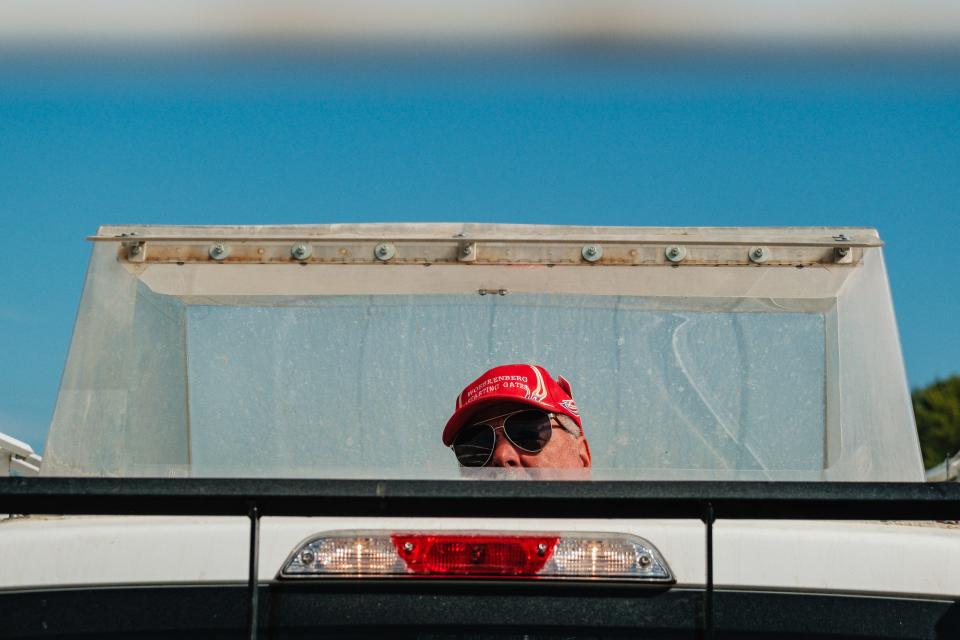
The nuts and bolts of starting a race is ideally something the casual race fan isn’t going to notice if done right – they are laser-focused on the spread of horses. The process requires a bit of finesse and good communication between two people beyond the horsemen: a driver facing forward from the driver’s seat of the vehicle and a starter, who takes over the acceleration and braking with the simple movement of a lever. At that point, all the driver does is steer. Then, when the starting gates are retracted and the horses are off, the starter cedes full control back to the driver, who immediately brings the vehicle to a stop and allows for the race to finish.
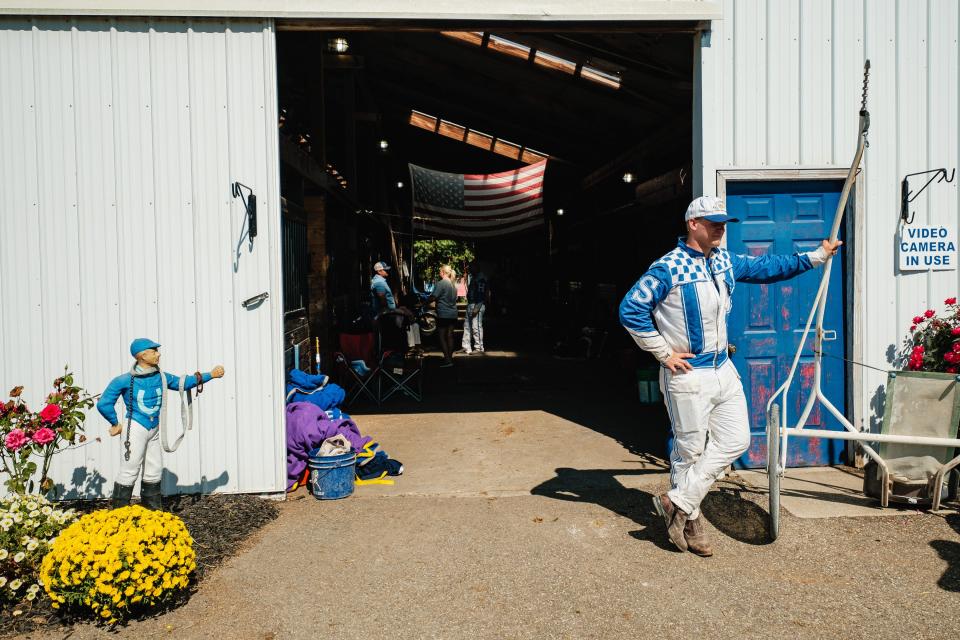
“The average person doesn’t even see me in the horse race because they’re watching the horses. But, there’s more races won and lost when I close the wings than there ever is at he finish line. But what people don’t understand is, my driver is just steering. I have all the control in the back, just backwards,” Woebkenberg said. “What my job entails is that from the time that they (the horsemen) come on the race track till I say go, they’re my responsibility. In essence, I’m the captain on the battlefield with my troops. I do way more than what my job says I’m supposed to, but somebody’s got to keep this thing running.”
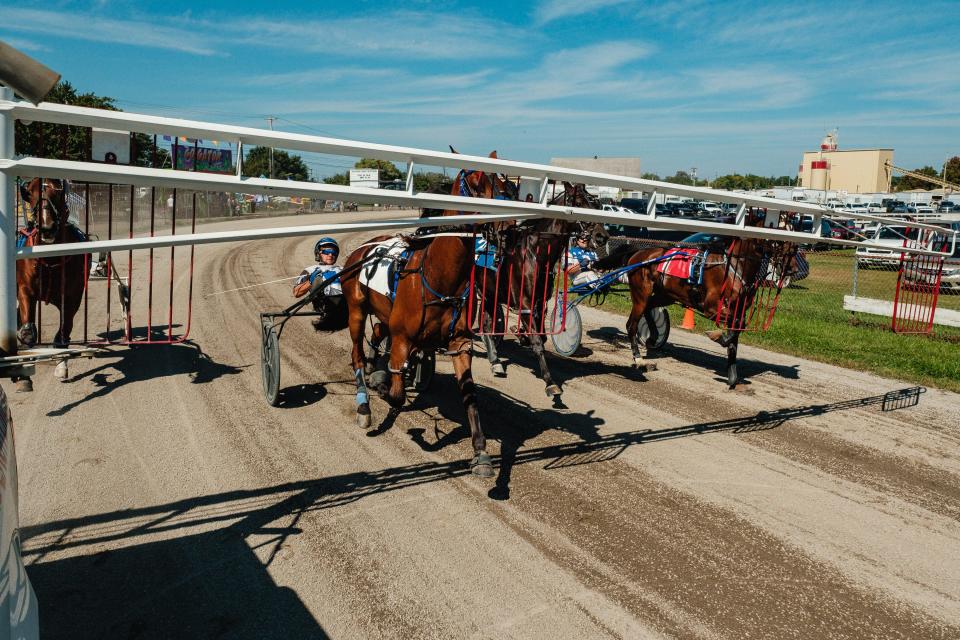
Why mobile gates?
Why not start from a stand-still like the Thoroughbreds do at the Kentucky Derby?
Revolutionization of the sport was marked by two significant advances in the 1940s: Pari-mutual racing under lights designed to curb race fixing, and the implementation of mobile starting gates as a method of drastically reducing false starts – but not completely effective at elimination. If the starter sees something that isn’t fair, a recall may be issued, and the race is ordered be started again, further reinforcing the necessity for not just someone to to ride backwards and pull a lever, but to truly live and breathe the culture and the sport.
“We’ve got the greatest program going, we just don’t know how to tell anybody,” said Mike Woebkenberg.
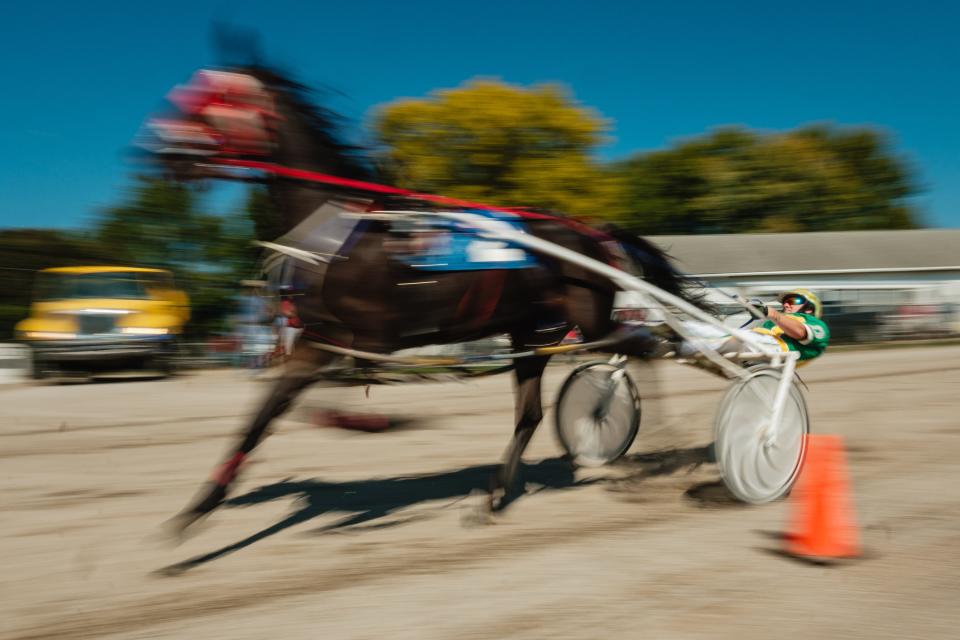
For more information about harness racing in Ohio, visit the Ohio Harness Horsemen’s Association online at, ohha.com, or on Facebook at, www.facebook.com/OhioHarnessHorsemensAssociation.
For more information about harness racing at fairs, visit fairs.ustrotting.com.
T-R staff photographer Andrew Dolph can be reached by phone at 330-289-6072, or by email at, adolph3@gannett.com
This article originally appeared on The Times-Reporter: Starting gate: Mike Woebkenberg leads the field in harness racing

